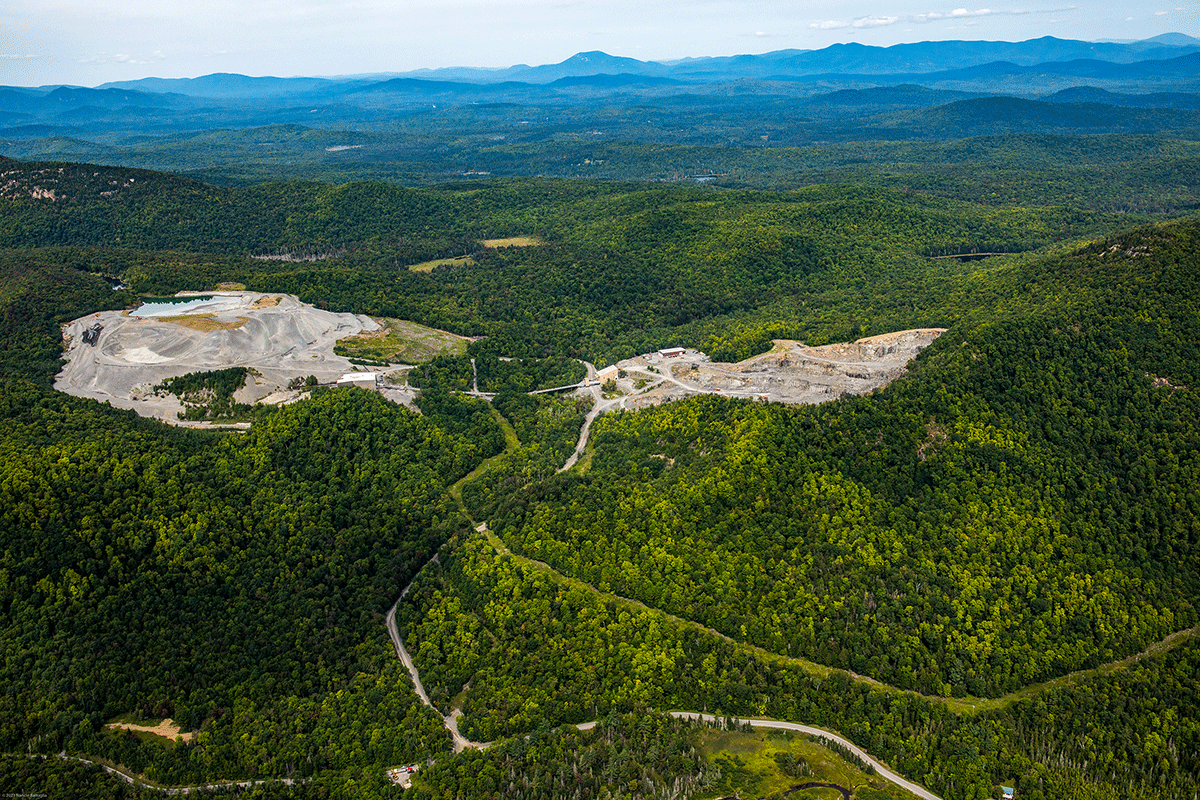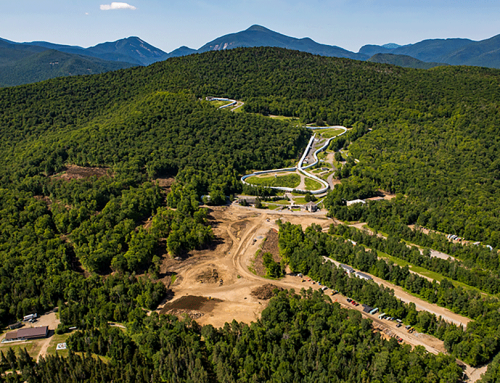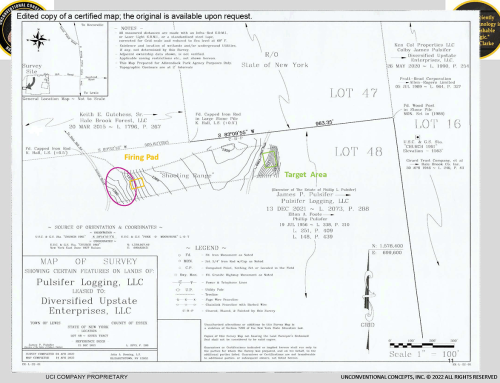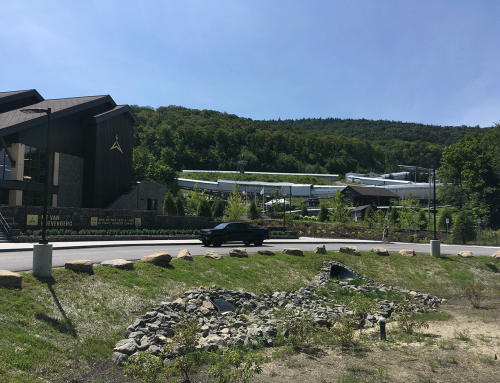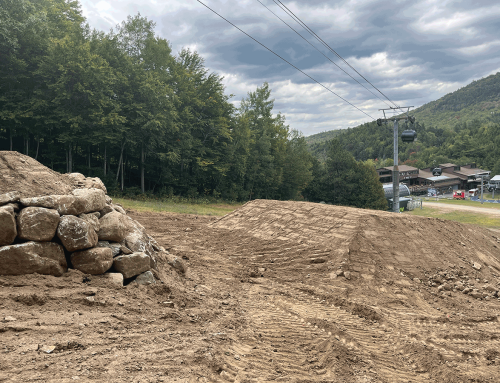Protect the Adirondacks manages an active independent public oversight program for how state agencies and local governments manage the Adirondack Park. One part of this is monitoring major development projects that come before The Adirondack Park Agency (APA) and Department of Environmental Conservation (DEC). Barton Mines Corporation, LLC (Barton) has applied to the DEC and the APA for permits to allow a significant expansion of its Ruby Mountain Mine located in the Town of Johnsburg, Warren County, in the Adirondack Park. The mine site occupies approximately 850 acres of land and borders the Siamese Pond Wilderness Area. The company is seeking to expand its mining footprint by more than 33%. The proposed expansion will significantly increase operations at the mine site and will have wide-ranging negative impacts on air and water quality, noise, scenic vistas and other resources.
This is a dynamic project, where application materials are being updated on a regular basis, so please see recent updates at the end of this article.
Barton mines garnet, which is used for a variety of commercial and industrial activities and has been mining at the Ruby Mountain site for more than 50 years. The mining operations employ dozens of local residents. The mine on Ruby Mountain is the only mountaintop mine in the Adirondacks. Barton is systematically tearing apart the mountain by clearing a large area on the summit and by blasting materials out of mining pits. The blasted material is then processed onsite with chemical and machine treatment to separate garnet from other materials. The garnet comprises about 7% or 8% of the materials mined from the huge pit. The processed garnet is trucked to a manufacturing facility on the banks of the Hudson River in North River. The processed solid and liquid mining wastes are disposed of onsite in a massive debris pile that now covers more than 73 acres, is hundreds of feet high atop a ridge that’s over 2,000 feet in elevation, and is visible from many locations including Thirteenth Lake Road, Moxham Mountain, Thirteenth Lake, and from many nearby residences.
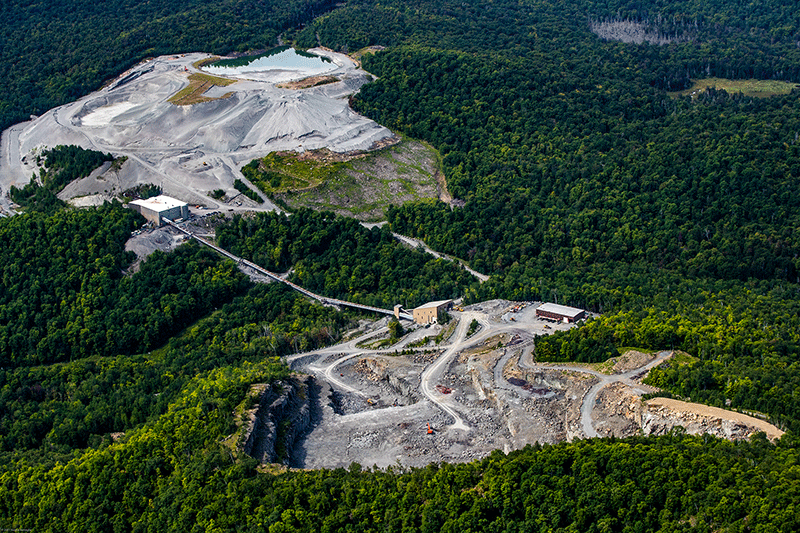
This pictures shows the mine pit on the right and the debris pile and ponds on the left. Over 90% of the material mined in the pit is discarded as treated materials in the massive debris pile.
Barton Mines has substantially and steadily expanded its operations in the last two decades. Barton’s milling and crushing operations continue to run around the clock, 24 hours a day, seven days a week. The noise from mining operations endured by local residents in the greater Garnet Hill area is often constant. Dust blows from the debris piles and coats homes, windows, and decks. Loud blasts are regular occurrences. The visual impact of the bare and exposed debris pile is stark. The dust, noise, and visual impacts are also impacting the neighboring Forest Preserve in the Siamese Ponds Wilderness Area. Protect the Adirondacks has been working with area members, local residents and businesses, and other advocacy groups in reviewing Barton’s permit application that is seeking a massive expansion of its current operations with little regard for impacts on area residents.
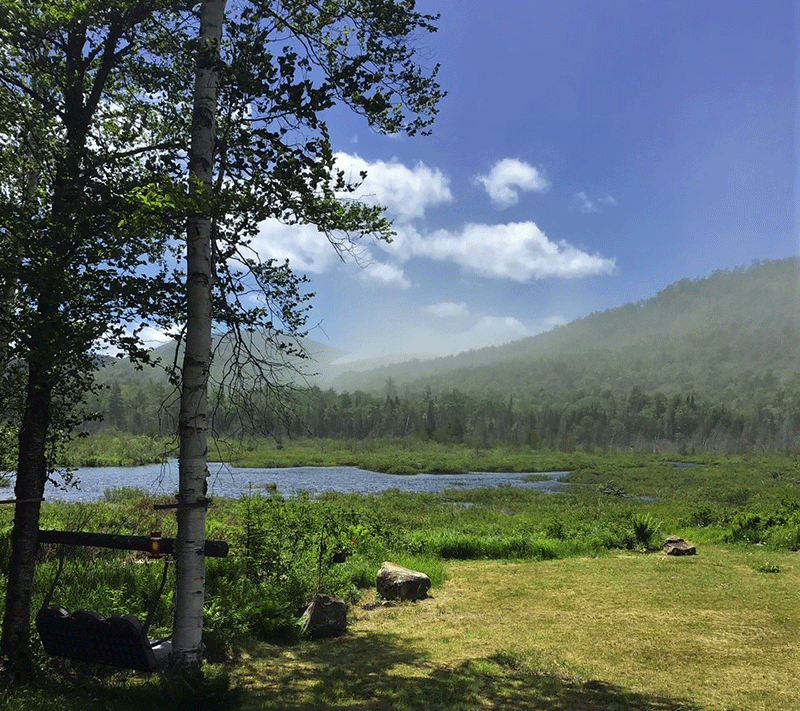
A dust cloud swirls above the massive debris pile at the Barton Mine site as seen from a neighboring residential property. This type of event is a regular occurrence.
Barton Mines Seeks Massive Expansion of Ruby Mountain Mine
Barton is seeking to expand the footprint of the mine by more than one-third, from 195 acres to 267 acres; raise the elevation of the tailings waste disposal pile by more than 100 feet which, at its current elevation of more than 2,200 feet above sea level, is higher than many Adirondack peaks; continue to operate industrial equipment at the site 24 hours a day, seven days a week, perpetuating unacceptable noise levels; increase the frequency of blasting, also adding to noise impacts to nearby residents and recreational users; and triple the heavy duty truck trips entering and leaving the mine site.
PROTECT has been actively engaged in reviewing Barton’s permit applications and has identified numerous serious deficiencies. For example, in 2022 we pointed out significant shortcomings in Barton’s analysis of visual impacts, including that the company had failed to include in its analysis important publicly accessible viewpoints such as the Hooper Mine trail and the Balm of Gilead Mountain trail in the Siamese Ponds Wilderness Area, the Moxham Mountain trail in the Vanderwhacker Mountain Wild Forest, and Garnet Hill Lodge. In 2023, PROTECT also identified visual impacts from windblown dust and heavy machinery operations at the waste disposal pile that were not addressed. In addition, we pointed out that the visual simulations prepared by Barton were incomplete and, in some cases, under-represented the visual impacts of the mine, and that the visual impact mitigation measures proposed by Barton are insufficient and unproven in effectiveness.
In response to our comments, Barton submitted a revised visual impact analysis which confirms that the expanded mining operation will have negative visual impacts affecting several publicly accessible viewpoints. However, the magnitude of the visual impacts is not accurately depicted in Barton’s revised submission and the company has still failed to consider the visual impacts to Garnet Hill Lodge, a popular locally-owned facility for hiking, mountain biking, Nordic skiing and weddings and retreats. PROTECT submitted a follow up letter to APA and DEC in January 2024 providing comments from our visual impacts expert that pointed out the continuing deficiencies in the application.
PROTECT also objected to Barton’s failure to provide any engineering designs for the massive tailings waste disposal site at the mine. Our expert engineering consultant pointed out that a qualified geotechnical engineer needs to be closely engaged with ongoing investigations, monitoring, and redesign, and that the application documents provide insufficient detail about the ongoing investigation and monitoring program and fail to designate who will be managing, overseeing, and certifying the program. We stated that a design of the expansion stamped by a qualified geotechnical engineer licensed in the State of New York needs to be included as part of the application. We further noted that the mine is near the highest seismic hazard region in New York State and thus a seismic scenario should be required. Finally, we stated that the application failed to include a design of the drainage and seepage control system proposed for the tailings disposal site, which is necessary to ascertain the ability of the waste pile to remain stable.
PROTECT has also previously commented to the APA and DEC about their failure to adhere to requirements under the Climate Leadership and Community Protection Act (CLCPA) in its review of the Barton application, a major industrial operation. The CLCPA imposes a mandatory duty on all State agencies to consider the greenhouse gas (GHG) emissions associated with the issuance of a permit or approval. Unfortunately, the APA and DEC still refuses to comply with the CLCPA.
In January 2024, APA issued a third Notice of Incomplete Application to Barton. PROTECT will continue to closely monitor the Barton application in the months ahead. PROTECT has heard from a number of members and area residents about the shortcomings in the Barton application to the APA and DEC.
Potential Environmental Violations of Existing APA-DEC Mining Permits
In the course of its review, PROTECT discovered what we believe to be significant ongoing solid waste and water pollution violations at the Barton mine site.
The Barton mine site includes an immense mine tailings waste disposal site that currently occupies more than 73 acres. Its actual height is hard to calculate, given the vast changes to the topography of the mountaintop mine site. As part of its application, Barton is proposing to significantly increase both the height above the current level and the area covered by the tailings waste disposal site. Barton has disposed of, and continues to dispose of, hundreds of thousands of tons of industrial process waste annually at this on-site disposal facility. The waste disposal site, which Barton euphemistically refers to as the “Resource Mineral Engineered Storage Facility,” is, in PROTECT’s opinion, a solid waste management facility as defined by the Environmental Conservation Law and therefore requires a DEC solid waste permit. To PROTECT’s knowledge, Barton has never applied for or obtained a solid waste permit for the tailings waste disposal site, and PROTECT believes it is therefore operating in continuing violation of the Environmental Conservation Law and DEC regulations.
Barton is also operating in violation of its APA permit, which sets specific limits on the allowable size and volume of the tailings waste disposal site. The APA staff recently informed Barton that it has exceeded those limits. PROTECT’s calculations of the volume of waste disposed of at the tailings waste disposal site, based on Barton’s own description of its annual generation of tailings waste, confirmed that Barton has far exceeded the volume limit set by the APA permit. Because the APA permit states that the entire permit becomes void if Barton fails to comply with any condition in the permit, Barton is currently operating the mine without an APA permit in violation of the Adirondack Park Agency Act. APA has apparently decided not to pursue enforcement action regarding this violation.
The application documents indicate that the mine holds two water pollution permits, one for stormwater and one for discharge of industrial process wastewater. Recent inspections by DEC identified a number of violations of the permits; however, DEC has apparently failed to issue Notices of Violation.
With respect to the stormwater permit, DEC found that a Stormwater Pollution Prevention Plan (SWPPP) was not maintained onsite and that the SWPPP did not include required inspection and reporting requirements, preventative maintenance procedures, and current site conditions. In an August 2023 inspection, DEC noted that stormwater within “Big Crusher Pond” and “Frog Pond” on the mine site was actively discharging polluted stormwater to Brown Pond Brook, which flows into Thirteenth Brook. In addition, although the mine is a regulated Petroleum Bulk Storage facility with 26,775 gallons of onsite petroleum storage, the SWPPP does not include a discussion of petroleum storage and handling as a potential pollutant source and lacks a Spill Prevention, Control, and Countermeasures plan as required.
The individual discharge violations include an unauthorized discharge of pollutants with no notification to DEC and no sampling of the effluent. The permit also requires preparation of a Best Management Practice Plan that is reviewed and updated annually, but Barton has apparently failed to comply with this requirement.
PROTECT brought this pattern of significant environmental violations to the attention of DEC and APA by letter dated January 4, 2024. The DEC regulations authorize DEC to suspend the review of a permit application when the applicant is the subject of an enforcement action. Consequently, PROTECT’s letter requested that DEC and APA immediately investigate the violations and suspend their review of Barton’s application pending satisfactory resolution of all ongoing environmental violations. DEC recently responded, stating its interpretation that the waste pile is exempt from regulation as a solid waste management facility. PROTECT disagrees with DEC’s interpretation of the exemption and continues to believe that the waste pile requires a solid waste management facility permit, particularly because the waste pile has not been engineered.
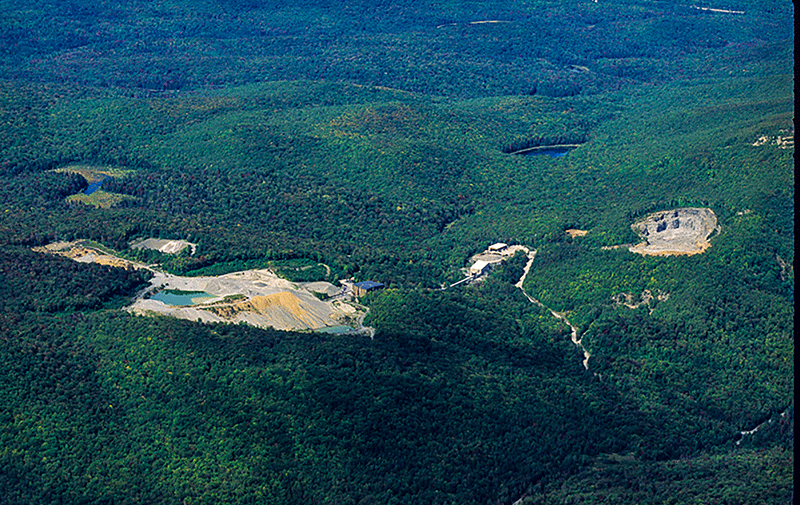
This aerial picture was taken of the Barton Mine pit and debris pile in the 1980s. This mountaintop mine has grown significantly over the years and now the company wants to expand it even more with little outreach to neighboring residents impacted by its mining activities.
The expansion of Barton Mines will have major impacts on the quality of life of area residents, many of whom live in homes that pre-date mining on Ruby Mountain, and on the Forest Preserve in the Siamese Ponds Wilderness Area. Forest Preserve lands classified as Wilderness are supposed to be the most highly protected lands in the state. All involved in monitoring and scrutinizing Barton’s applications for this massive expansion are mystified by the company’s refusal to talk with or meet with local residents and business negatively impacted by their mining activities. Barton Mines has refused to undertake mitigation measures to control dust, abate noise, or screen or limit visual impacts. The company’s unwillingness to have any good faith discussions with neighbors to find solutions that allow the company to meet its objectives while ensuring that it is a good neighbor is a stark departure from how the company has conducted its affairs for decades. Protect the Adirondacks encourages Barton Mines to engage with the area residents and businesses negatively impacted by its mining activities.
Update 1 (January 26, 2024): Barton Mine Expansion Application Rejected as Incomplete Again
In January, the Adirondack Park Agency (APA) and the Department of Environmental Conservation (DEC) notified Barton Mines, LLC (Barton) that its application for a major expansion of its mining operations at the Ruby Mountain Mine in the Town of Johnsburg, Warren County, remains incomplete. Click here for that this document. This is the third Notice of Incomplete Application (NIPA) issued by APA and DEC for the proposed mine expansion. Both NIPAs identified serious deficiencies in the Barton application, many of which were pointed out in comment letters and expert submissions from PROTECT and other advocates.
The APA NIPA notes that geotechnical submissions from Barton were not signed by a licensed professional engineer and requires the company to cure this defect; requires Barton to provide additional information regarding its proposed site reclamation plans; requires that inaccuracies in Bartons’ visual impacts assessment be corrected and resubmitted; requires additional analyses of potential noise impacts; and requires Barton to evaluate the potential climate change impacts of its proposed clearing 36 acres of mature forest.
The DEC NIPA requires Barton to update its groundwater elevation data; requires engineering plans to be submitted for the proposed drainage system for the tailings waste disposal site; requires additional analyses of noise impacts; requires submission of additional geotechnical data by a license professional engineer for the tailings waste disposal site; requires additional stormwater control measures.
Update 2 (February 21, 2024): DEC Recants its Position on Compliance with the Climate Leadership and Community Protection Act
The third NIPA described above also required Barton to conduct a greenhouse gas emissions analysis of the proposed expansion as required by the Climate Leadership and Community Protection Act (CLCPA), but then in February the DEC recanted that position and sent out a letter to Protect the Adirondacks stating that it no longer required any analysis under the CLCPA. DEC stated that language about complying with CLCPA was included “in error.” This was a strange about-face for a regulatory agency.
Update 3 (February 21, 2024): Barton Mines Attorney Disputes Parts of this Article
On February 15, 2024, the attorney for Barton Mines sent a letter to Protect the Adirondacks disputing some of the information in this article. His letter and our response are posted below. Protect the Adirondacks made modifications as explained in our letter and stand by our assertions and positions.
Click here to read the letter from Barton’s attorney.
Click here to read the response from Protect the Adirondacks.

